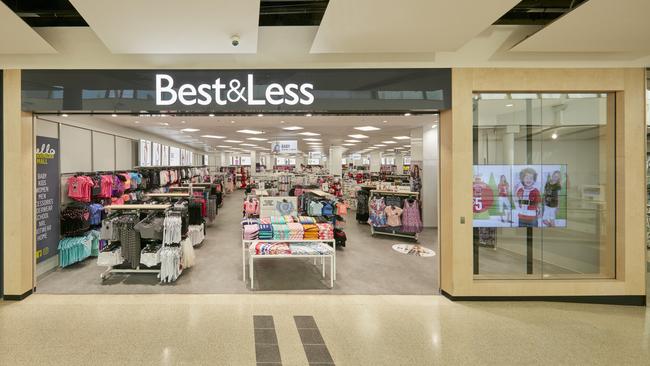Best & Less has blamed a poor summer for a 33pc drop in interim net profit
Poor weather conditions and a late start to summer has hurt Best & Less’ interim profit and outweighed strong trading through Christmas.

Discount department store Best & Less has posted a one third slide in half-year profit, as strong trading through Christmas was not enough to counter the earnings hit of a delayed start to summer and heavy discounting on some of its merchandise to clear stock.
The retailer said on Tuesday that consumer shopping behaviour continued to normalise towards pre-Covid-19 levels into the new year, with in-store traffic increasing while online sales, conversion and units per transaction continuing to moderate in line with historical norms.
For the first seven weeks of the second half of the 2023 financial year, sales were up 3.8 per cent, with same-store sales better by 3.9 per cent.
Best & Less said with the benefit of returning supply chain stability, inventory is well positioned, and it was optimistic about the upcoming key Easter and Mother’s Day periods.
But the first half was dominated by poor weather conditions that hurt its sales of summer fashion and apparel, and later which saw Best & Less put on discounts and promotions to clear unwanted inventories.
Interim sales rose 13 per cent to $324.8m, but net profit dropped nearly 33 per cent to $11.3m.
Best & Less has also cut its interim dividend to 8c per share from 11c, payable on April 28.
The retailer said it continued to gain positive trading momentum through the Black Friday and Christmas trading period, with December like-for-like sales up 5 per cent and core non-discretionary product lines across the important baby category performing particularly well.
However, this momentum was insufficient to fully offset the impact of the delayed start to summer weather and supply chain delays.
With consumer demand and foot traffic being weaker than anticipated in the first half, the company took action to reduce inventory risk and strengthen price perception, which impacted gross margin percentage.
Best & Less said the combination of a lower gross profit margin percentage and softer than expected sales in the first half resulted in a lower profit.
Executive chairman Jason Murray said while trading conditions were inconsistent in the first half, its team remained committed to delivering exceptional value and service for its customers.
“Our core non-discretionary and baby product lines continued to perform well, reflecting the strength of our differentiated value proposition of twice the quality at half the price.
“Having successfully transformed the business to an everyday low price specialty value retailer, we are laying the foundations for the next phase of growth. We are evolving to a ‘one company, two brands’ structure, which will enable us to operate even more efficiently as we continue to invest in enhancing our omnichannel capabilities and rolling out new stores.” This includes six in the second half, which will see our store count grow to 251 across Australia and New Zealand by the end of FY23.”
The retailer said moving forward, Best & Less’ growth was expected to be driven by its six growth priorities, being continued market share growth in baby, kids and womenswear, achieving above market online sales growth and enhancing the store network, underpinned by supply chain transformation.
There is no change to the company’s guidance provided in January, which stated that assuming no material deterioration in economic conditions that impacts sales, Best & Less expected to deliver a second half pro forma net profit of between $18m and $20m. This compares to second half reported pro forma profit of $21.4m, which included a $1.6m profit contribution from the 27th trading week in that half.
Best & Less shares closed at $1.68 on the on ASX on Monday, valuing the group at $210m.




To join the conversation, please log in. Don't have an account? Register
Join the conversation, you are commenting as Logout